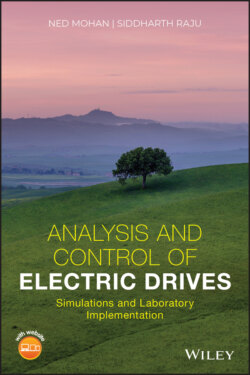Читать книгу Analysis and Control of Electric Drives - Ned Mohan - Страница 14
1‐1 THE CLIMATE CRISIS AND THE ENERGY‐SAVING OPPORTUNITIES
ОглавлениеThe climate crisis, caused by the burning of fossil fuels, is the greatest and an existential threat facing humanity. To reduce the emission of carbon dioxide, a necessary solution is first to convert our energy use to electricity, as much as possible, and then to produce that electricity using renewables such as solar and wind. As we will see in the subsequent sections in this chapter, electric drives play a significant role in generating and efficiently consuming electricity and providing ample opportunity for energy savings.
According to [1], “advances in integrated power electronics have the potential to develop a new generation of energy‐efficient, high‐power density, high‐speed motors and generators and, in turn, save significant energy.” In addition, a great deal of energy savings can be achieved by shifting from nearly constant speed motors to adjustable‐speed electric drives, as explained in this chapter.
Prior to looking at the energy‐saving potentials, we should understand the meaning of primary energy. According to [2], the “Primary Energy is energy in the form that it is first accounted for in a statistical energy balance, before any transformation to secondary or tertiary forms of energy. For example, coal can be converted to synthetic gas, which can be converted to electricity; in this example, coal is primary energy, synthetic gas is secondary energy, and electricity is tertiary energy.” Often, the primary energy and the savings in the primary energy are expressed in quads, where a quad equals 1015 BTUs and 10 000 BTUs equal approximately 2.93 kWh.
